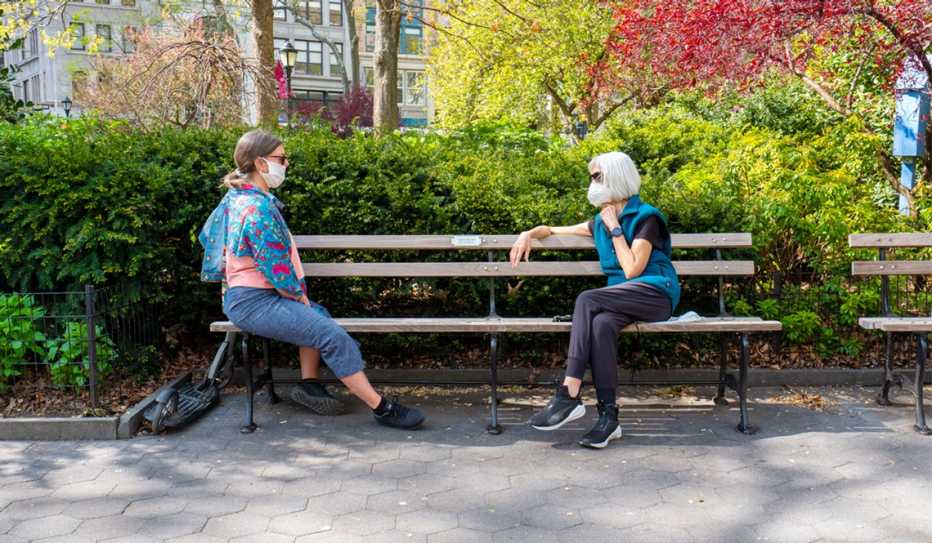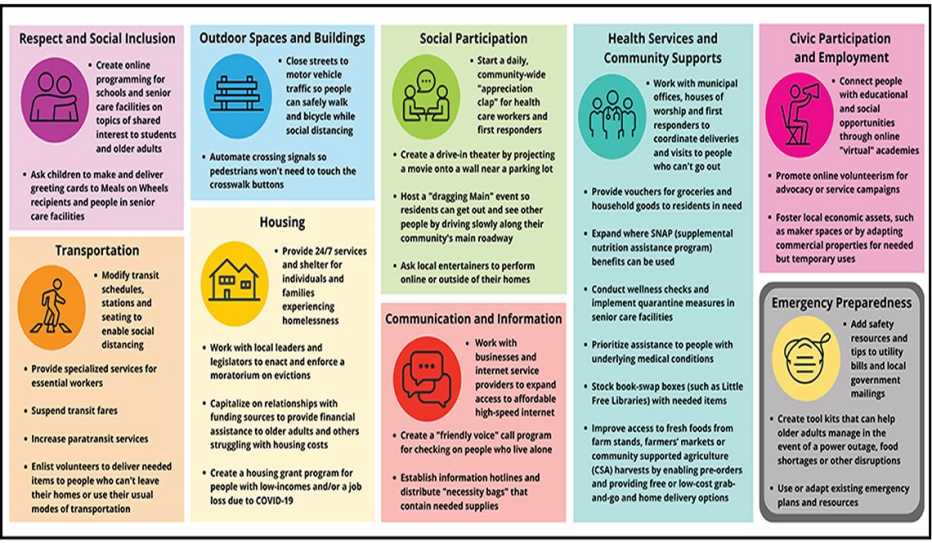AARP Hearing Center


The COVID-19 pandemic has been a tragic, seismic event for the world, the United States and communities of all sizes throughout the nation. Local leaders, organizations and individuals have needed to pivot to protect their communities.
Given the disproportionate impact of COVID-19 on older adults, this sudden call to action has been acutely felt by communities enrolled in the AARP Network of Age-Friendly States and Communities. The nearly 500 member-communities, the leaders of which have committed to addressing the needs of older adults, took quick action.
In the early months of the pandemic, AARP learned that age-friendly communities focused their pandemic response efforts on three major issues:
- ensuring access to information
- ensuring access to food
- keeping older adults engaged in civic and community life
First-person narratives from local leaders describe these efforts, which range from innovative online programming, to the use of phone trees and new “friendly caller” programs, to the deployment of volunteers to collect and distribute essential food supplies. (See "Age-Friendly Responses to COVID-19.")
Communities and COVID-19


Age-friendly communities now recognize that the work to become a great place for people of all ages will be indelibly changed by the COVID-19 pandemic. Not only have underlying service gaps and needs been brought to the forefront, but the longer-term impact of changes in how communities operate are helping to redefine what an age-friendly community must include.
The COVID-19 Questionnaire
An AARP survey of age-friendly network communities in July 2020 provided insights about the degree to which prior age-friendly efforts helped in the pandemic response — and about how COVID-19 is likely to impact a community's work going forward.
- More than 50 percent of respondents believe the community's age-friendly efforts helped it be better prepared for responding to COVID-19 due to already-in-place partnerships, prior efforts to improve communications with older adults, earlier efforts to understand residents’ needs, and the presence of a volunteer network.
- The most urgent needs, said respondents, involved access to food and medicine (as well as health care and mental health care), access to information and the ability to keep older adults engaged. Most communities had already addressed such needs in its age-friendly action plan.
- Other urgent needs included the safety of congregate senior living facilities (only 23 percent of communities cited existing work on this issue); preparing for emergencies and disasters (included in 47 percent of action plans); supporting local business and economic activity (42 percent of action plans); and addressing disparities and systemic inequalities (present in 47 percent of existing action plans).
- Looking ahead to the post-COVID era, several areas emerged as needing attention. These include expanding access to work and volunteer opportunities (87 percent cited this as an urgent recovery need versus 71 percent during the response); ensuring access to adequate housing (87 percent versus 79 percent); and ensuring access to transportation and mobility (95 versus 88 percent).
- Roughly two-third of respondents believe their community’s COVID-19 experience will change its age-friendly approach.
Given that the entities leading age-friendly initiatives — such as local governments, area agencies on aging, and metropolitan planning organizations — are well-positioned to implement policy and programmatic change, the lessons learned during COVID-19 have the potential to enhance the quality of life for people of all ages for years to come.
- Check out the network's Member List
- Read Age-Friendly Responses to COVID-19
Page published December 2020




























































